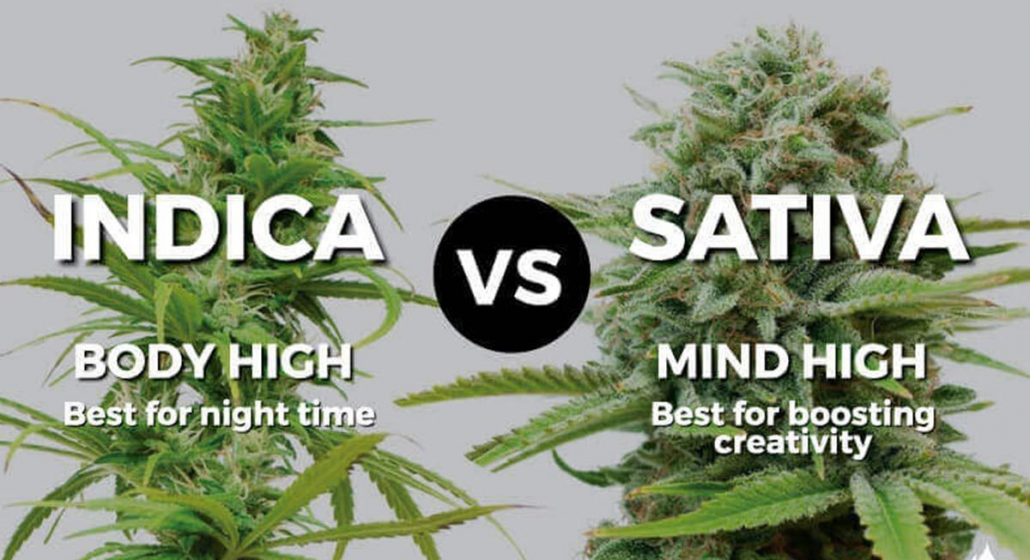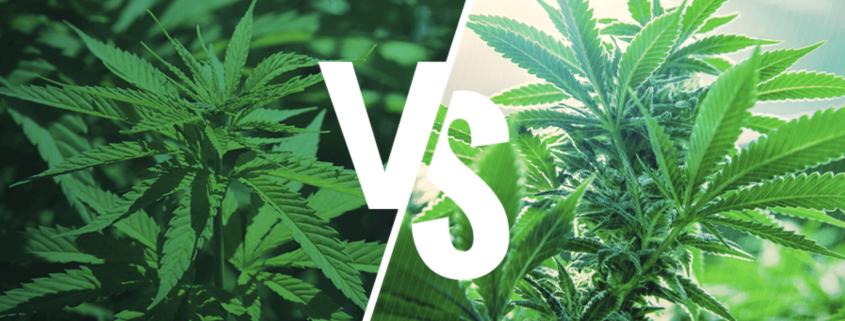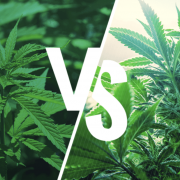Part 1: Sativa vs. indica cannabis
Your guide to cannabis types; sativa, indica, and hybrid cannabis
If the world of cannabis is new for you, looking at cannabis strains can get overwhelming as there are over 3,000 strains (and counting) that deliver a variety of positive, and negative effects. But even with this variety, you’ll notice marijuana is divided into two strain categories: indica and sativa. So what’s the difference between indica and sativa? These two cannabis types can be summarized simply in predicting their effects.
- Indica strains: Marijuana strains believed to be physically sedating. Ideal for relaxing over a night of Netflix, or a nightcap for a night of deep sleep.
- Sativa strains: This cannabis offers more invigorating, uplifting cerebral effects that pair well with physical activity, social gatherings, and creative projects.
This belief is rooted in the cannabis culture that bud concierges (aka budtenders) will start by asking which of these types you prefer. But data from cannabis researchers suggests that there’s little evidence to support these perceptions. We do know however that indica and sativa cannabis strains look different and grow differently, but this distinction is primarily useful only to cannabis cultivators.

So how did “indica” and “sativa” become the mainstream terms for marijuana strains and how do they matter when choosing a strain?
Indica and sativa: where it all began
The words “indica” and “sativa” were introduced around the 18th century to describe different species of cannabis: Cannabis sativa and Cannabis indica.
“Sativa” describes hemp plants found in Europe and Eurasia, while “indica” describes varieties found in India. Though the cannabis varieties we consume usually come from indica, both are used to organize strains found in the cannabis market today.
But these terms have evolved over the years, and the mainstream definition of indica vs sativa has changed. The following is probably the simplest way to interpret these.
- Sativa = refers to tall, narrow-leaf varieties of cannabis, thought to induce energizing effects.
- Indica = described as stout, broad-leaf plants, thought to deliver sedating effects.
- Hemp = refers to the industrial, non-intoxicating varieties harvested primarily for fiber, seeds, and CBD. Only just recently on December 20th, 2018 under the new Farm Act did POTUS Donald Trump sign into law the legalization of hemp.
Yes, it can be a little confusing since the commercialization of cannabis has turned distinctions between species and subspecies upside down. Even with the mainstream understanding of indica vs. sativa, it’s important to understand these categories based on research. Why? A number of reasons, but as consumers use the variety of legal cannabis strains for recreational and medical purposes, the differences will help determine the effect they seek.
How to select the right cannabis strain?
Before choosing indica or sativa, it is important to consider a third cannabis type: hybrid. Hybrids are thought to fall somewhere in between the indica-sativa spectrum, depending on the traits they inherit from their parent strains.
If you’re trying to guide consumers to the right strain as a concierge, all of this may be a bit overwhelming. But when you understand the basics, you’ll be better equipped to find the right product for you.
So to help you out, here is some additional post to help you out.
- Tips for smoking marijuana for the first time
- What is cannabis oil, and the various types of oil
- What is the difference between CBD and THC
- The best marijuana strains for beginners
- What is kush?
For budtenders, be aware of the foundation of your recommendations, especially when your customers are treating medical ailments. Always recommend to consult a professional licensed doctor first, and take the time to learn the benefits of cannabinoids and terpenes.
As the medical cannabis market matures and more research becomes available, the mainstream definitions could be replaced with more scientific endorsed understandings, such as strains with high CBD with low THC plus some alpha-pinene to help with focus or treat pain.
But there are lots of factors used when choosing your cannabis. For example, if you find that sativa gives you the experience you’re seeking, there’s no reason not to use it. We recommend consumers try POW’s solution to discover strains to design your experience or mood.
Cannabis may not be as simple as we’d like, but its diversity and complexity are what make it such a remarkable plant and tool for consumers of all types.
The difference in effects between indica and sativa
The effects of a strain depend on lots of factors, including the chemical profile, your biology, and the consumption method, among others. Knowing how these factors change your experience will help you find the best strain for you.
Cannabinoids
Cannabis has hundreds of chemical compounds to create effects, led primarily by terpenes and cannabinoids. Cannabinoids like THC and CBD (the two most common) are the main drivers of cannabis’ therapeutic and recreational effects:
- THC (9-tetrahydrocannabinol) makes us feel hungry and high and relieves symptoms like pain and nausea.
- CBD (cannabidiol) is a non-intoxicating compound known to alleviate anxiety, pain, inflammation, and many other medical ailments.
Cannabis has more than a hundred different types of cannabinoids, but THC and CBD are the important ones. Instead of relying on mainstream descriptions of indica or sativa classifications, use the following classifications instead:
- THC-dominant strains are primarily chosen by consumers seeking a potent euphoric experience. These strains are also selected by patients treating pain, depression, anxiety, insomnia, and more. If you tend to feel anxious with THC-dominant strains or dislike other side effects associated with THC, try a strain with higher levels of CBD.
- CBD-dominant strains contain only small amounts of THC, and are widely used by those highly sensitive to THC or patients needing clear-headed symptom relief.
- Balanced THC/CBD strains contain balanced levels of THC, offering mild euphoria alongside symptom relief. These tend to be a good choice for novice consumers seeking an introduction to cannabis’ signature high.
You should note that both indica and sativa strains have different cannabinoid profiles. Many people think higher CBD levels caused sedation, and that CBD is more prevalent in indica cultivars, which is most definitely not the case. There is not a systematic rule or relationship between the cannabinoid profiles with indica and sativa strains.
Terpenes
If you’ve ever used aromatherapy, you understand the basics of terpenes. These are aromatic compounds that come from plants and fruit. They can be found in lots of different plants, including cannabis. Terpenes are what make cannabis smell the way it does. Terpenes have been known to be popular in driving the sedating or energizing effects consumers experience.
Cannabis terpenes can make us feel energized or sedated, depending on which terpenes are produced. There are many types of terpenes in cannabis, so familiarizing yourself with some of the common ones can help you pick the best strain for you.
If possible, smell strains you’re considering for purchase and use that to guide your choices as you experience different strains. In time, your intuition and knowledge of cannabinoids and terpenes will help you find your favorite strains and products.
Consider the following questions when choosing the appropriate strain or product for you.
- How much experience do you have with cannabis? If your tolerance is low, consider a low-THC strain in low doses.
- Are you susceptible to anxiety or other side effects of THC? If so, try a strain high in CBD.
- Do you want the effects to last a long time? If you do, consider edibles (starting with a low dose). Conversely, if you seek a short-term experience, use inhalation methods or a tincture.
This should give you a fast track intro to the differences between indica and sativa. I’ll follow this post with part 2 of indica, sativa, and hybrid to dig a little deeper on what you should know about these types of cannabis.





Leave a Reply
Want to join the discussion?Feel free to contribute!